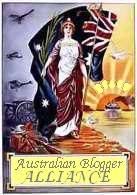INDEPENDENCE DECIDE FOR YOUSELF, EXERCISE YOUR RIGHT TO CHOOSE.
Our hidden families
By Elisabeth Wynhausen
July 10, 2004
THE shops in Melbourne's Collingwood are a five-minute walk from the high-rise housing estate where Alana O'Connor lives with her four children. But buying a loaf of bread can be complicated if she's on her own with the children.
Eighteen-month-old Joel goes in the pram. O'Connor shepherds the others into the dank, unpredictable lift, down six floors and out to Smith Street, checking that hyperactive Latrell, her four-year-old son, isn't picking up the syringes lying around, as his sister Jorddie, 7, is reminded to hold 2 1/2-year-old Ieeshia by the hand.
"I'm forever constantly making sure I've got the three with me by my side and not dawdling," says O'Connor, 24, a vivacious woman with a fresh pink complexion who has lived in the housing estate for two years.
There are places where an unemployed single mother with four children - and a fifth on the way - might be made to feel uncomfortable but the neighbourhood around the Collingwood flats isn't one. It is one of the poorest precincts of Melbourne. Only people on income support get public housing nowadays.
"Round here most people are on the pension or the dole. You know you fit in because you're all getting the same type of income," says O'Connor, who gets $1020 a fortnight in government benefits. She pays rent of $290 a fortnight - which leaves her with $180 in pension week and $550 the week of the parenting paymenT
"Pension week I do the shopping by the day. I pay cash. I've always done everything cash. Sometimes I think I'd like to pay with a card so no one knows how much money I've got in my purse." But O'Connor does not have a credit card, one symptom of the social exclusion now used as a marker of life on the margins.
Despite the longest burst of prosperity in living memory, more Australians are excluded from its benefits. Research for Inquirer reveals that nearly one in five families with dependent children has no breadwinner.
The exclusive analysis of census figures shows that while 12 per cent of families were jobless in 1986, that figure was more than 18 per cent in 2001. Nearly half the jobless families, 160,000 of the 357,000, included Australian-born sole parents such as O'Connor. The nation that had the highest rate of social mobility in the world just 30 years ago is witnessing the formation of an underclass.
On a cold Melbourne day, a little steam rises from the damp towels thrown over the heater in the living room of O'Connor's flat. The room is sparsely furnished, with an old couch and two armchairs, and a television set, a VCR and a DVD player in pride of place in the corner. There is a phone that takes incoming calls - for outgoing calls she uses a mobile with a pre-paid card. The living room walls are bare. There are no ornaments save a single framed family photograph. On a shelf in her bedroom, out of the children's reach, O'Connor keeps a few treasures, such as the motorbike ornaments she buys for Latrell.
"You get pamphlets in the mail - [there are] things there you can order. That's like my luxury-type thing."
But she fell behind in the payments, owes $2000 and finds debt collectors at the door. The bills accumulated when she moved - part of the pattern of her life.
"I'm not like my mother in one way," she says. "Every time I've moved I've taken my furniture with me." O'Connor spent her childhood traipsing across Victoria with her mother, Julie, who could never stay in one place for long. "We'd just leave with our clothes and our photos. By the time I was in grade six, I had been to six different primary schools.
"I wouldn't say we missed out. We always had plenty of food. Mum used the system, like the Salvation Army." Because it was what she grew up with, she says, she would find it easier to call on charities in her turn. "But I try not to rely on the food banks a whole lot unless I really, really have to."
Like her mother, O'Connor was 16 and single when she had her first child. That puts her family into its second generation with time on welfare - and one of 455,591 people on the "parenting payment - single" (introduced in its original form in the 1970s). Is a welfare culture being passed from one generation to the next?
O'Connor says she would have had her baby whether the benefit was there or not. She was already with Jamie, the father of her four children. Yes, she wishes she had waited a few more years. But at the time, motherhood made her feel she was worth something.
Now, she has been separated from Jamie since last year. He isn't working either, the norm in the world in which their children are growing up. "I just hope they get a good education and stuff like that and not do what I did and leave school early," she says.
There are more than 660,000 children under 15 in jobless families. They are from the first generation of children born in poverty in Australia who may have less chance than their parents of escaping it.
Children whose parents rely on income support are more likely than average to leave school early, experience unemployment, have children by the age of 19 and go on to income support themselves, according to research for the federal Department of Family and Community Services.
But the amplifying effects of poverty have relegated many to areas where health services have deteriorated, schools have decayed and paid work is so hard to find that working poverty is a category to aspire to.
Last year O'Connor found a job for the first time in her life. "I worked at Go-Lo in Smith Street when they opened up. I tried my hardest," says O'Connor. "That was the first time I achieved something." But after a few months the store hired more teenage check-out chicks and O'Connor was unemployed again.
"Single parents on income support are spending 12 years on average on benefits," says Peter Saunders of the Centre for Independent Studies, a think tank that promotes individual enterprise and distrusts big government solutions. He believes the culture of dependency needs to be broken by requiring those on welfare to look for work and watering down employment regulations to encourage business to provide more jobs.
"And you've got to have tax reform so it pays to go to work." he says, touching on the big area of welfare debate. When those on welfare manage to get a job, they have to pay tax on their wages and they lose some of the benefits. They face effective marginal tax rates of 60c or more for every extra dollar they earn. "It's inefficient and it's demeaning to people trying to be self-reliant," says Saunders.
His organisation has proposed that the lowest-paid do not pay tax. An alternative plan would give a tax credit - a government top-up - for people moving from welfare to work. But what work? The second generation of welfare recipients is also the first generation trying to survive in the "flexible" job market, where they don't pay much for unskilled workers and employment is often casual and sporadic. Many have been cast into the strange new netherworld between work and welfare.
Unemployment is down to 5.6 per cent, according to the official figure. But as Michael Raper, president of the National Welfare Rights Network, points out, people are counted as employed if they do as little as one hour of paid work a week. And figures from the Department of Family and Community Services show that 380,000 people on benefits are working two to 10 hours a week. Perhaps one-quarter of those on the dole are working at some point.
"They've got bits and pieces of casual work," says Stephen Ziguras, a senior researcher at the Brotherhood of St Laurence. "Their income goes up and down a lot. They're trapped in an uncertain situation, unable to make decisions about their lives."
This is the precarious employment open to people trying to get off welfare. Many choose it anyway. In 2001, 60 per cent of the poorest tenth of the population marginally improved their lot, according to preliminary findings on the persistence of poverty from the Household Income and Labour Dynamics in Australia survey conducted by the Melbourne Institute. But of this 60 per cent, only one in five crossed over to the wealthier half of the population.
HILDA director Mark Wooden warns that the bottom tenth includes self-employed people disguising their incomes; otherwise the difference between being on the bottom rung or higher up is the difference between having a job or not. But having climbed up a rung or two, they may soon slip down again. Research by the Australian National University's social policy evaluation, analysis and research unit suggests that moves to toughen welfare rules have in fact prompted long-time unemployed to spend more time looking for work. But, typically, they are recycled from welfare to part-time work, then back to welfare again.
"If you've got a well-paying job and secure circumstances, I don't think you realise what it's like for people going through this roundabout of precarious employment," says Ziguras.
If so, Rob Carruthers is in the position to explain. Dark-eyed and rake-thin, Carruthers, 42, was unemployed for eight years before he managed to talk his way into an office job. It was torture, he says. He held down the job for a year but spent every day on edge. "You just don't walk into the workplace and everything's all right. After eight years I wasn't even prepared for the workplace culture." He lost the job and was unemployed for another year before the next opportunity arose.
Carruthers lives on the Atherton Gardens Estate in Fitzroy - the poorest precinct of Melbourne. Ninety-six per cent of its residents are on income support, about one-third of them on the age pension. One-quarter are single parents.
The Brotherhood of St Laurence, which has offices across the street, has set up a community jobs program for residents of the Fitzroy and Collingwood estates. A hundred have gone through pre-employment programs into traineeships linked to jobs. Other attempts to shift the long-term unemployed off welfare result in failure more often than not, but nine out of 10 in the brotherhood's program finish the traineeships and most go on to a job. The successes include O'Connor's mother, Julie, who has a steady job after years on welfare.
"I didn't think I'd ever get off the pension, to be honest," says Julie O'Connor, 41, rushing into her daughter's flat to take a couple of her grandchildren to the park. The first to say she used to drink often to forget, O'Connor doesn't drink now. "I've got more things to look forward to."
The carefully structured course run by the brotherhood's Nick Marandos made all the difference, she says. "He takes the time to talk to you. Other people want you to use their services but only because the Government's giving you money." When she completed the course, she found a job with the needle-exchange program. She gives out information and goes around picking up used syringes. "I like the work," she says.
Sadly, because of funding cuts, the five-day-a-week job has been cut back to three.






0 Comments:
Post a Comment
Subscribe to Post Comments [Atom]
<< Home